
Photo Credit: fizkes / Shutterstock
As religion and politics become more and more polarizing, some American families can barely get through a big holiday gathering without an argument, clash of personalities, or at the very least, some awkwardness. Yet while some Americans ruthlessly cancel their extended families for opposing viewpoints or outdated beliefs, others are choosing to live under the same roof.
There’s no shortage of reasons for shacking up with relatives—from financial benefits, to caregiving perks, to simple convenience. Whatever the reasons, multigenerational households in the U.S. are continuing to grow and are becoming much more commonplace.
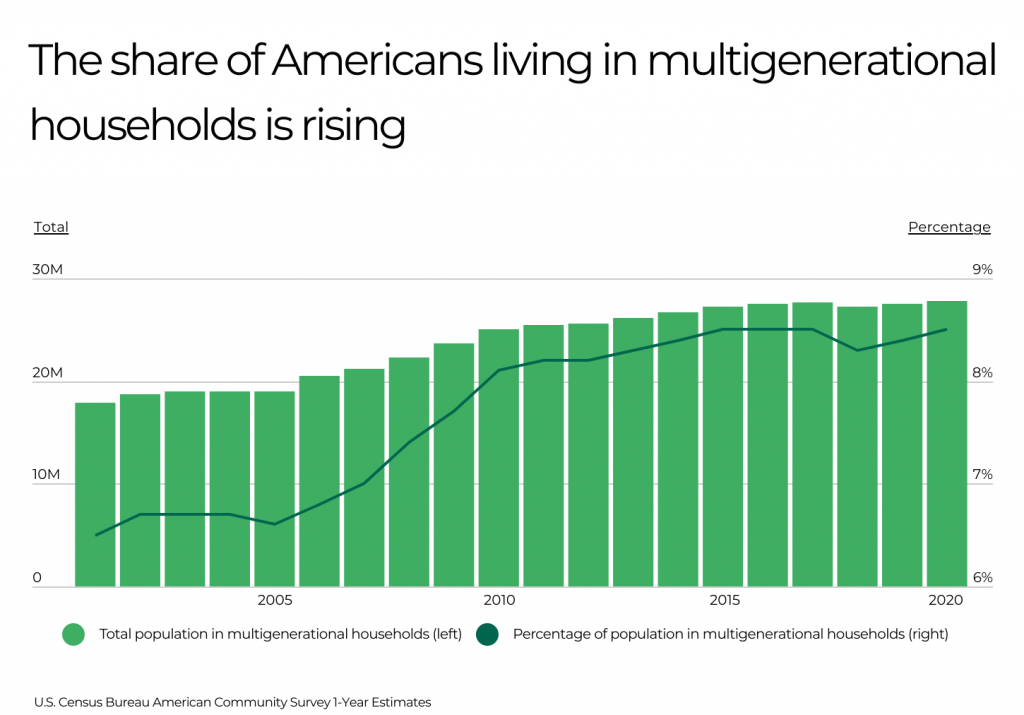
Over the past two decades, the number of Americans living in multigenerational households—defined as those households containing three or more generations—has increased significantly, from 17.9 million in 2001, to 27.9 million in 2020. This amounts to an increase from 6.5% of the total American population living in multigenerational households in 2001, to 8.5% in 2020.
Inflation, a limited supply of affordable homes, and rapidly rising childcare costs make living with relatives an attractive, financially-smart decision for an increasing number of American families. For millennial adults who are staying in school longer, postponing or forgoing marriage, and delaying forming their own households, living with parents—both as singles and part of a couple starting a family—can be a natural way to soften the blow of outstanding student debt and lack of accumulated wealth. Parents with their own kids living with grandparents reap the benefits of live-in childcare, and moving in with family can also be a temporary solution for anyone saving for a house or looking for a more sustainable job.
Additionally, as the global average life expectancy continues to grow, older adults require caregiving for longer, and living with adult children is often preferable (and less costly) than hiring full-time care or retiring to a nursing home.
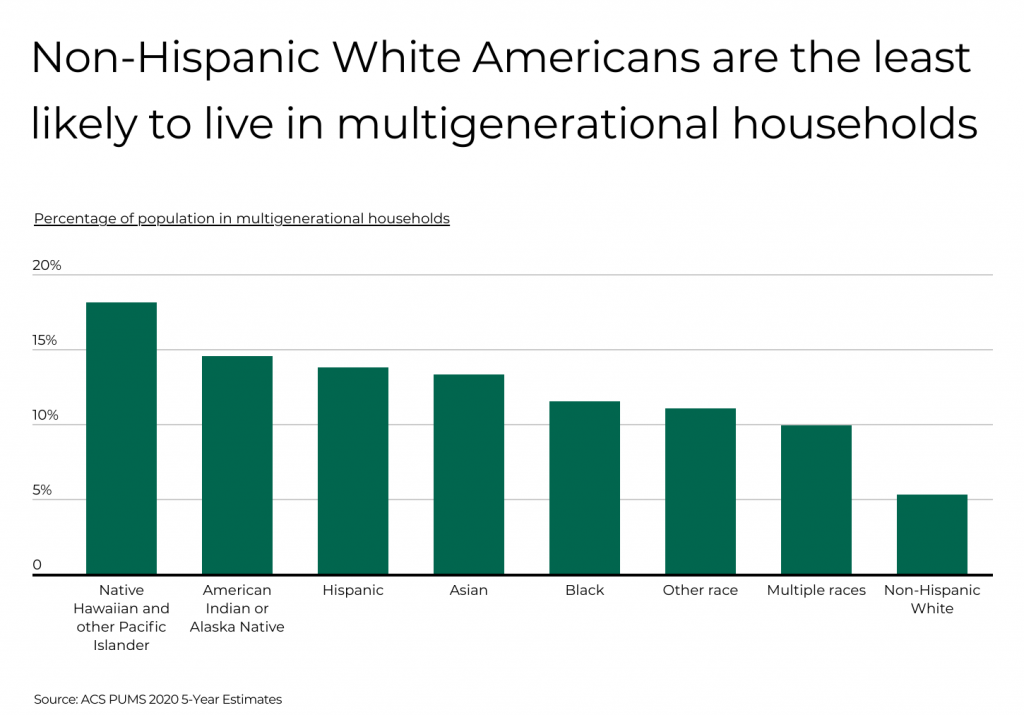
Of course, for some racial and ethnic groups, living with relatives and extended family has been a long-established part of their culture. In the United States, Asian, Black, and Hispanic Americans, who have contributed significantly to recent population growth, are more likely to live with extended family, contributing to the increased prevalence of multigenerational households.While multigenerational living is on the rise amongst non-Hispanic White Americans too, this group remains the least likely to live in multigenerational households.
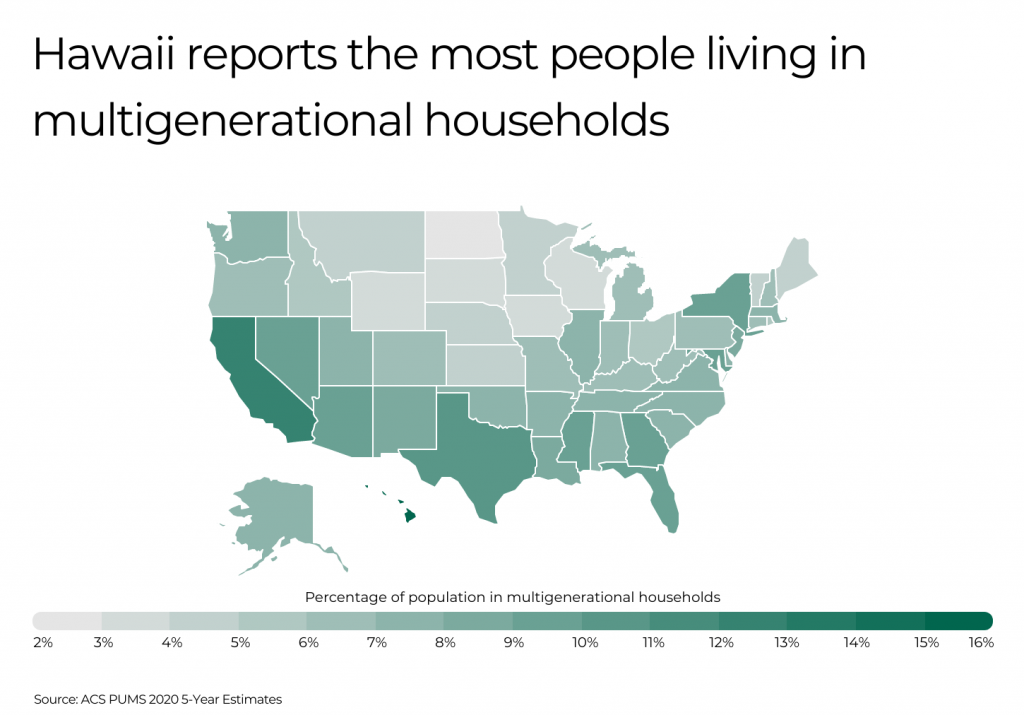
Areas with high living costs, large immigrant populations, and housing shortages are abundant with multigenerational homes, which explains why Hawaii (15.7%) and California (12.3%) report the highest percentages of people in multigenerational households. Meanwhile, Midwestern states, with a lower cost of living and more affordable housing prospects, are the least likely to have multiple families living under one roof.
The data referenced below is from the U.S. Census Bureau. To determine the locations with the most multigenerational households, researchers at Filterbuy calculated the percentage of the population living in multigenerational households, defined as those households consisting of three or more generations. In the event of a tie, the location with the greater percentage of households that are multigenerational was ranked higher.
Here are the U.S. metropolitan areas with the most multigenerational households.
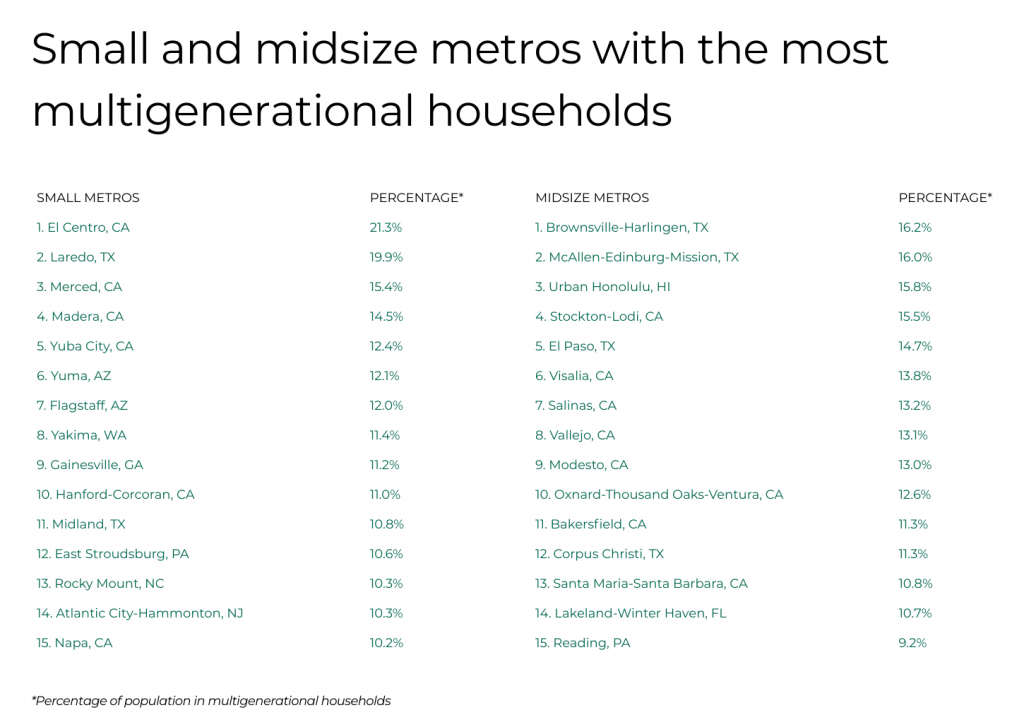
Large Metros With the Most Multigenerational Households

Photo Credit: Sean Pavone / Shutterstock
15. Memphis, TN-MS-AR
- Percentage of population in multigenerational households: 9.8%
- Percentage of households that are multigenerational: 4.5%
- Total population in multigenerational households: 122,275
- Total multigenerational households: 21,236

Photo Credit: Sean Pavone / Shutterstock
14. Atlanta-Sandy Springs-Alpharetta, GA
- Percentage of population in multigenerational households: 9.8%
- Percentage of households that are multigenerational: 4.7%
- Total population in multigenerational households: 583,151
- Total multigenerational households: 99,577

Photo Credit: Sean Pavone / Shutterstock
13. Dallas-Fort Worth-Arlington, TX
- Percentage of population in multigenerational households: 9.8%
- Percentage of households that are multigenerational: 4.7%
- Total population in multigenerational households: 727,236
- Total multigenerational households: 122,706

Photo Credit: Sean Pavone / Shutterstock
12. Las Vegas-Henderson-Paradise, NV
- Percentage of population in multigenerational households: 9.8%
- Percentage of households that are multigenerational: 4.9%
- Total population in multigenerational households: 218,861
- Total multigenerational households: 39,457

Photo Credit: Sean Pavone / Shutterstock
11. San Francisco-Oakland-Hayward, CA
- Percentage of population in multigenerational households: 9.9%
- Percentage of households that are multigenerational: 4.6%
- Total population in multigenerational households: 466,719
- Total multigenerational households: 77,918

Photo Credit: Sean Pavone / Shutterstock
10. New York-Newark-Jersey City, NY-NJ-PA
- Percentage of population in multigenerational households: 10.2%
- Percentage of households that are multigenerational: 5.1%
- Total population in multigenerational households: 2,034,286
- Total multigenerational households: 372,112

Photo Credit: Sean Pavone / Shutterstock
9. San Diego-Carlsbad, CA
- Percentage of population in multigenerational households: 10.3%
- Percentage of households that are multigenerational: 4.8%
- Total population in multigenerational households: 343,332
- Total multigenerational households: 54,661
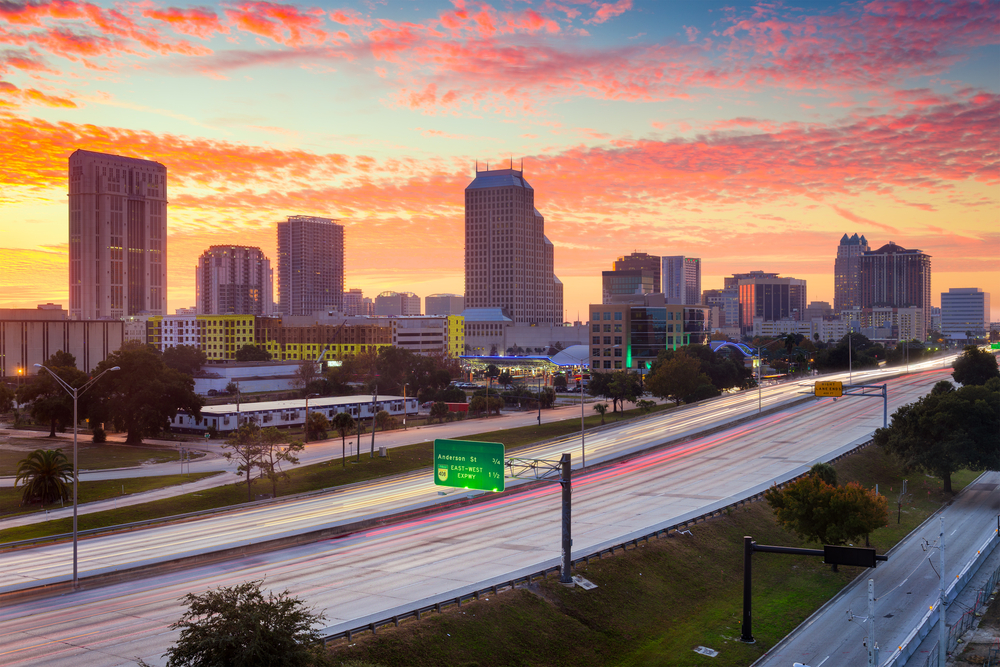
Photo Credit: Sean Pavone / Shutterstock
8. Orlando-Kissimmee-Sanford, FL
- Percentage of population in multigenerational households: 10.6%
- Percentage of households that are multigenerational: 4.8%
- Total population in multigenerational households: 266,873
- Total multigenerational households: 41,701

Photo Credit: Sean Pavone / Shutterstock
7. Houston-The Woodlands-Sugar Land, TX
- Percentage of population in multigenerational households: 10.7%
- Percentage of households that are multigenerational: 5.3%
- Total population in multigenerational households: 736,996
- Total multigenerational households: 126,723

Photo Credit: Uladzik Kryhin / Shutterstock
6. San Jose-Sunnyvale-Santa Clara, CA
- Percentage of population in multigenerational households: 11.1%
- Percentage of households that are multigenerational: 5.4%
- Total population in multigenerational households: 212,950
- Total multigenerational households: 34,496
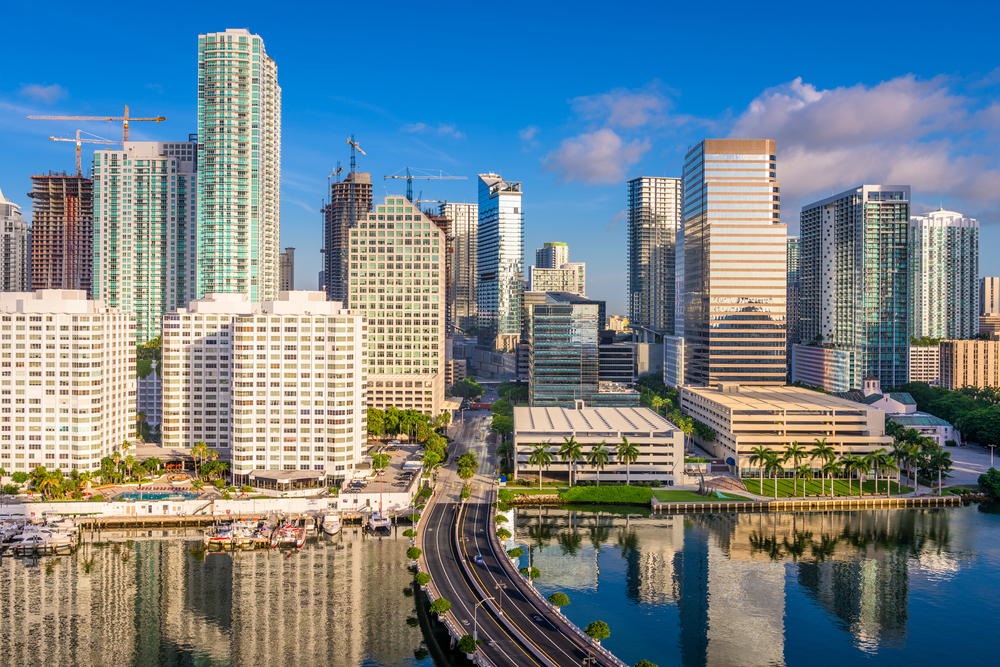
Photo Credit: Sean Pavone / Shutterstock
5. Miami-Fort Lauderdale-West Palm Beach, FL
- Percentage of population in multigenerational households: 12.1%
- Percentage of households that are multigenerational: 5.5%
- Total population in multigenerational households: 739,298
- Total multigenerational households: 119,394
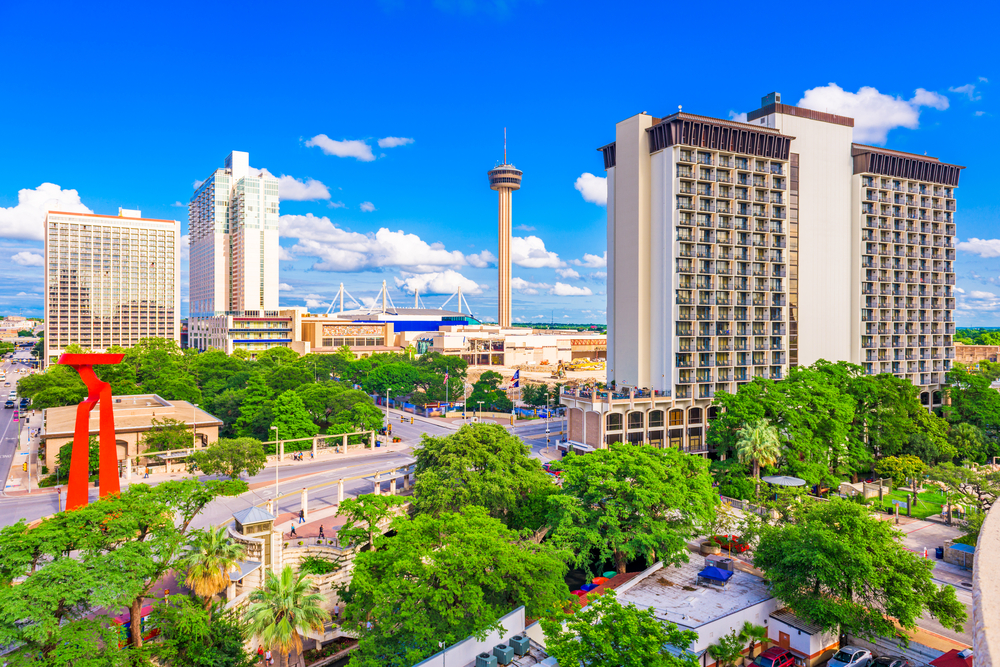
Photo Credit: Sean Pavone / Shutterstock
4. San Antonio-New Braunfels, TX
- Percentage of population in multigenerational households: 12.4%
- Percentage of households that are multigenerational: 5.4%
- Total population in multigenerational households: 303,018
- Total multigenerational households: 43,194
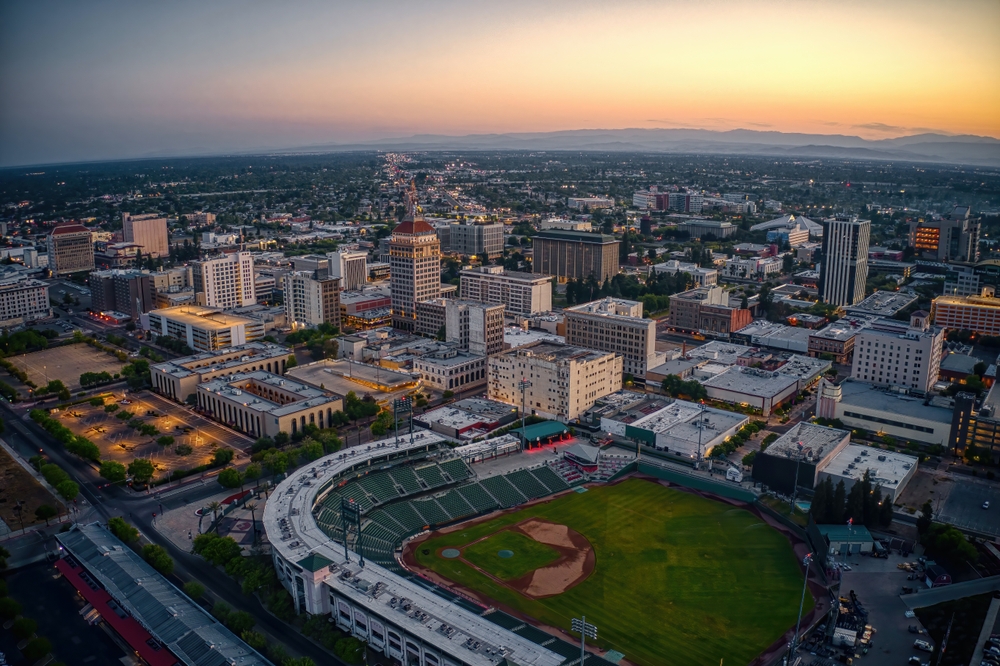
Photo Credit: Jacob Boomsma / Shutterstock
3. Fresno, CA
- Percentage of population in multigenerational households: 12.8%
- Percentage of households that are multigenerational: 6.5%
- Total population in multigenerational households: 126,758
- Total multigenerational households: 20,091

Photo Credit: Sean Pavone / Shutterstock
2. Los Angeles-Long Beach-Anaheim, CA
- Percentage of population in multigenerational households: 13.5%
- Percentage of households that are multigenerational: 6.5%
- Total population in multigenerational households: 1,785,293
- Total multigenerational households: 285,770

Photo Credit: Jon Bilous / Shutterstock
1. Riverside-San Bernardino-Ontario, CA
- Percentage of population in multigenerational households: 16.4%
- Percentage of households that are multigenerational: 8.4%
- Total population in multigenerational households: 752,276
- Total multigenerational households: 115,142
Detailed Findings & Methodology
The data used in this analysis is from the U.S. Census Bureau’s 2020 American Community Survey. To determine the locations with the most multigenerational households, researchers at Filterbuy calculated the percentage of the population living in multigenerational households—defined as those households consisting of three or more generations. In the event of a tie, the location with the greater percentage of households that are multigenerational was ranked higher. To improve relevance, only metropolitan areas with at least 100,000 residents were included. Additionally, metros were grouped into cohorts based on population size: small (100,000–349,999), midsize (350,000–999,999), and large (1,000,000 or more).